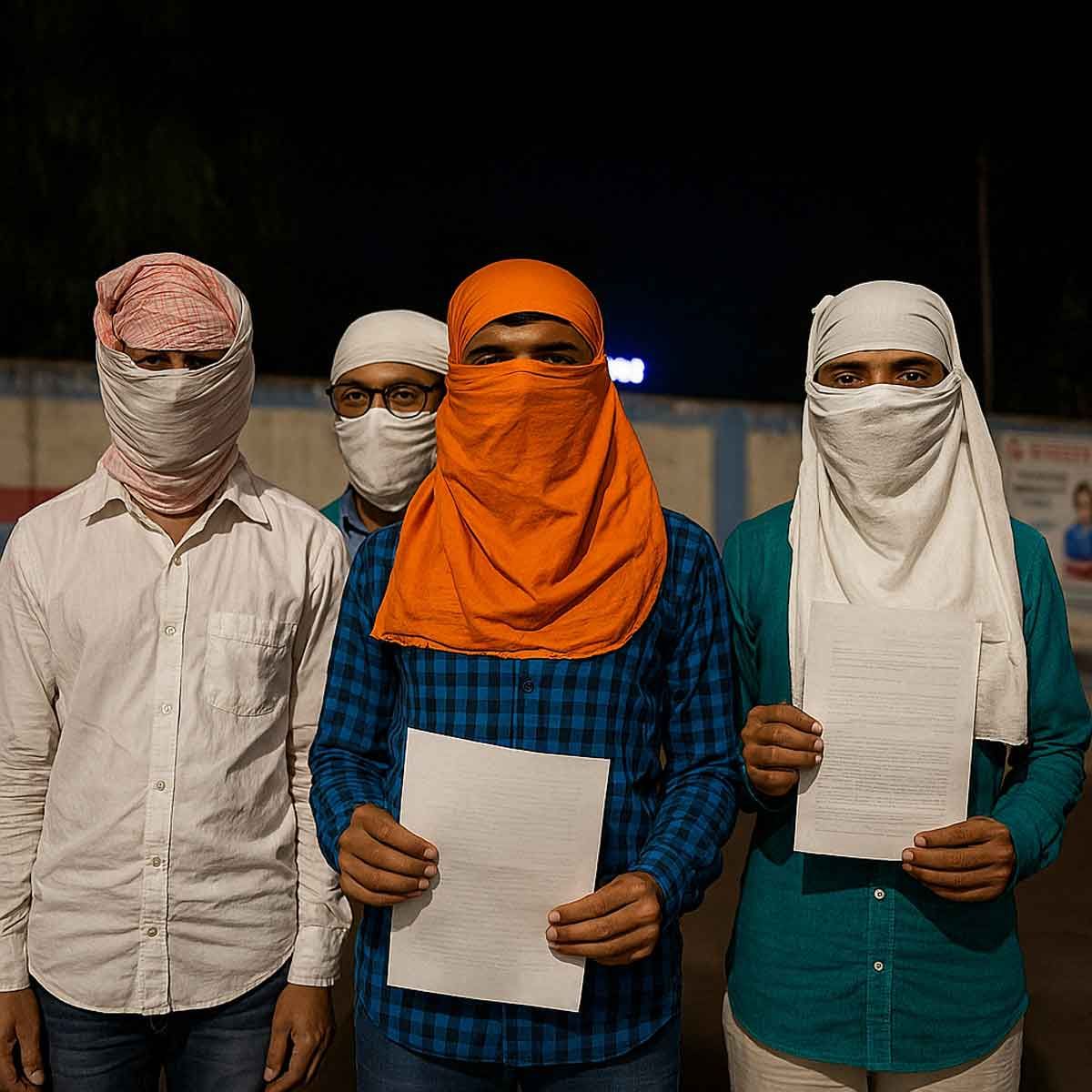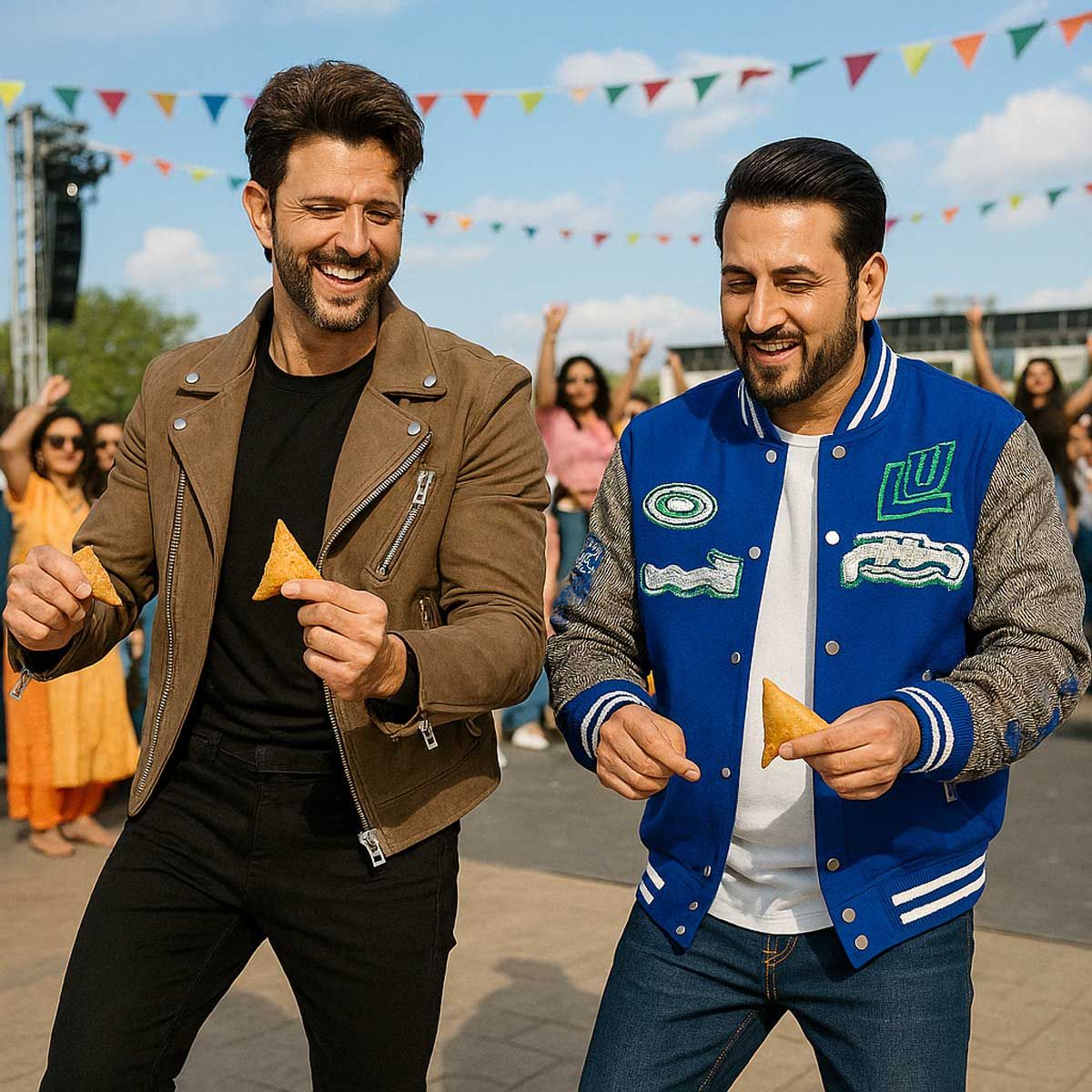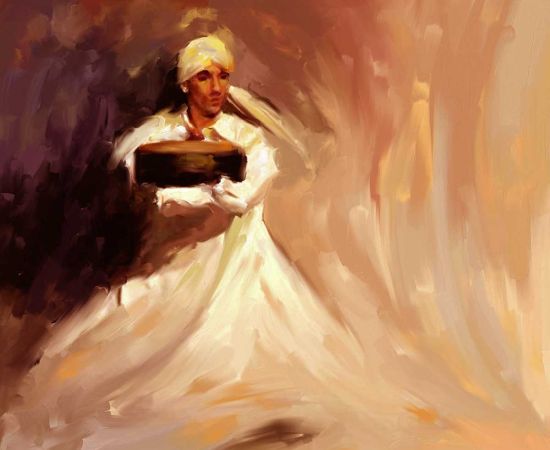More Coverage
Twitter Coverage
Satyaagrah
Written on
Satyaagrah
Written on
Satyaagrah
Written on
Satyaagrah
Written on
Satyaagrah
Written on
JOIN SATYAAGRAH SOCIAL MEDIA
3rd batch of 2630 Agniveers, with 396 women, successfully completed training, passing out in a grand ceremony at INS Chilka on 15 Mar; Reviewed by Adm R Hari Kumar, this event marks a new beginning in their naval careers after 16 intense weeks of training

In a stunning evening ceremony on March 15, 2024, INS Chilka in Odisha became the proud venue for the Passing Out Parade (POP) of the third batch of Agniveers, referred to as 02/2023. This significant event saw 2,630 Agniveers, including 396 women, successfully complete their initial naval training and step into the next phase of their careers with the Indian Navy. The parade was conducted under the watchful eyes of Admiral R Hari Kumar, the Chief of the Naval Staff, with Vice Admiral V Srinivas, the Flag Officer Commanding-in-Chief of the Southern Naval Command, playing a pivotal role as the conducting officer.
|
The event was graced by the presence of Shri Sudarshan Sahoo, a celebrated master sculptor honored with the prestigious Padma Shri and Padma Vibhushan awards, who attended as the Guest of Honour. Additionally, the parade was attended by M Suranjay Singh, a renowned sports figure and recipient of the Arjuna award, along with esteemed veterans from various fields. The families of the Agniveers, brimming with pride, also witnessed this landmark event, marking both an end and a beginning—the conclusion of 16 weeks of rigorous naval training and the commencement of a promising journey in the Indian Navy.
Admiral R Hari Kumar extended his congratulations to the trainees for their outstanding presentation, discipline, and precision during the parade. He underscored the emergence of new security challenges on the global stage, emphasizing the importance of leveraging their training to meet these challenges head-on. He encouraged the Agniveers to continuously sharpen their skills, stay ahead of technological advancements, and cultivate a robust foundation of knowledge, eagerness to learn, and dedication to their duties. Moreover, Admiral Kumar urged them to embody the Navy's foundational values of Duty, Honour, and Courage as they serve the nation with integrity and valor. He also took a moment to express his gratitude towards the parents of the Agniveers, recognizing their invaluable contribution to the country through their children's service.
This event not only celebrated the successful conclusion of the Agniveers' initial training but also highlighted the Indian Navy's commitment to preparing its personnel for the challenges they will face in the future. It served as a reminder of the importance of continuous learning, technological awareness, and adherence to core values in serving the nation with honor and strength.
In a distinguished ceremony, the Chief Guest recognized the outstanding achievements of several Agniveers by bestowing upon them prestigious medals and trophies. Among these talented individuals were Prathamesh Amit Darekar and Sanni Kumar Rajak, who stood out in their respective categories. Prathamesh, an Agniveer (SSR), and Sanni Kumar, an Agniveer (MR), were honored with the Chief of the Naval Staff Rolling Trophy and Gold Medal for Best Agniveer SSR & MR, respectively, in the men's category. Furthermore, Samruddhi Khandave, an Agniveer (SSR), was celebrated as the Best Woman Agniveer based on her overall performance and was awarded the Gen Bipin Rawat Rolling Trophy for her exceptional achievements.
Additionally, during the valedictory function of this significant event, the Chief of the Naval Staff had the honor of awarding the overall Championship Trophy to the Angad Division, recognizing their outstanding collective performance. The Shivaji Division was also acknowledged for their commendable efforts and was awarded the Runners Up Trophy. To further commemorate this occasion, the Chief of the Naval Staff unveiled the summer edition of Ankur, a bilingual magazine produced by the trainees at INS Chilka. This publication serves as a testament to the creativity and intellectual prowess of the naval trainees, providing them with a platform to share their experiences and insights.
|
Heading - The Genesis of the Indian Navy
The origins of the Indian Navy date back to a pivotal moment in 1612 when Captain Best engaged and emerged victorious against the Portuguese naval forces. This significant encounter, coupled with the prevalent threat posed by pirates, necessitated the establishment of a modest fleet by the British East India Company. This fleet, stationed at Swally, near Surat in Gujarat, marked the beginning of what was then known as the Honourable East India Company's Marine. Its primary role was to safeguard the East India Company's maritime trade in the Gulf of Cambay and the estuaries of the Tapti and Narmada rivers. The establishment of this marine force on September 5, 1612, laid the groundwork for the Indian Navy. The officers and men of this early naval force played a crucial role in mapping the coastlines of the Arabian Sea, the Persian Gulf, and the Indian subcontinent, thereby contributing significantly to the maritime domain's knowledge and security. This historical milestone signifies the birth of a maritime force that would evolve into the modern Indian Navy, standing guard over India's maritime interests and sovereignty.
The narrative of the Indian Navy's evolution takes a significant turn with the historical event of Bombay's cession to the British. In 1662, Bombay was formally ceded to the British Crown but it wasn't until February 8, 1665, that they physically took control of the island. Subsequently, on September 27, 1668, the island was handed over to the East India Company. This transition had a profound impact on the maritime defense responsibilities of the region, placing the onus on the Honourable East India Company's Marine to safeguard the trade routes off the coast of Bombay, adding to its strategic importance and operational domain.
The year 1686 marked a pivotal shift in British commerce with a pronounced focus towards Bombay, prompting a significant rebranding of the maritime force to the Bombay Marine. This force distinguished itself through versatile engagements, confronting not only traditional European naval adversaries such as the Portuguese, Dutch, and French but also tackling pirates and interlopers of diverse origins. Moreover, the Bombay Marine demonstrated remarkable valor and strategic acumen in its operations against regional powers like the Marathas and the Sidis, and showcased its military prowess in the Burma War of 1824.
With the dawn of 1830, a new chapter began as the Bombay Marine underwent another transformation, being renamed Her Majesty's Indian Navy. This period saw an expansion in the Navy's roles and responsibilities, especially following the British acquisition of Aden and the establishment of the Indus Flotilla. The strategic importance and operational scope of the Navy experienced a significant boost, preparing it for more complex engagements. This readiness and versatility were put to the test during the China War in 1840, where the Navy's contributions and effectiveness were unequivocally demonstrated. The evolution of the Navy through these changes not only reflects the adaptation to emerging maritime challenges but also the establishment of a formidable naval force capable of projecting power and safeguarding interests in regional and international waters.
|
Throughout its history, the Indian Navy has seen a continuous expansion in its capabilities and undergone several changes in its designation. Starting from 1863 until 1877, it was once again called the Bombay Marine, a name that harkened back to its earlier days. Following this period, it transitioned into Her Majesty's Indian Marine, during which time it was organized into two distinct divisions. The Eastern Division was stationed in Calcutta and was overseen by the Superintendent of the Bay of Bengal, while the Western Division was based in Bombay under the Superintendent of the Arabian Sea. The year 1892 marked another milestone when, in acknowledgment of its exceptional service in various campaigns, the force was rebranded as the Royal Indian Marine. By this time, it boasted a fleet of over 50 vessels, showcasing its growth and strategic importance.
The Royal Indian Marine played a pivotal role during the First World War, utilizing its fleet of minesweepers, patrol vessels, and troop carriers in response to mines detected off the coasts of Bombay and Aden. Its primary responsibilities included patrolling maritime territories, transporting troops, and delivering war supplies to critical locations in Iraq, Egypt, and East Africa. This period also saw the first Indian, Sub Lieutenant D.N Mukherji, commissioned as an engineer officer in 1928, marking a significant step towards inclusivity and diversity within the naval forces.
The transformation continued into 1934 when the Royal Indian Marine was restructured into the Royal Indian Navy, a change that was commemorated in 1935 with the presentation of the King's Colour in recognition of its distinguished service. At the onset of the Second World War, the Royal Indian Navy was a modest force of eight warships. However, by the war's conclusion, it had expanded dramatically to include 117 combat vessels and 30,000 personnel, demonstrating its critical role in various operational theaters.
Following India's independence, the Royal Indian Navy was comprised of 32 vessels, primarily suited for coastal patrol duties, and staffed by 11,000 officers and men. Initially, the senior officer positions were occupied by members of the Royal Navy, with Rear Admiral ITS Hall, CIE, serving as the first post-independence Commander-in-Chief. The transition to a republic on January 26, 1950, saw the removal of the 'Royal' prefix from the navy's name. Admiral Sir Edward Parry, KCB, was the first Commander-in-Chief of the now Indian Navy, passing the baton to Admiral Sir Mark Pizey, KBE, CB, DSO, in 1951. Admiral Pizey also had the distinction of becoming the first Chief of the Naval Staff in 1955, succeeded by Vice Admiral SH Carlill, CB, DSO.
A landmark moment in the history of the Indian Navy came on April 22, 1958, when Vice Admiral RD Katari assumed the position of the first Indian Chief of the Naval Staff, symbolizing the navy's complete transition to an institution led and managed by Indians. This era marked the culmination of a series of transformations that saw the Indian Navy evolve from a modest coastal defense force into a formidable maritime power, reflecting India's growing independence and sovereignty on the global stage.
 |
 Support Us
Support Us
Satyagraha was born from the heart of our land, with an undying aim to unveil the true essence of Bharat. It seeks to illuminate the hidden tales of our valiant freedom fighters and the rich chronicles that haven't yet sung their complete melody in the mainstream.
While platforms like NDTV and 'The Wire' effortlessly garner funds under the banner of safeguarding democracy, we at Satyagraha walk a different path. Our strength and resonance come from you. In this journey to weave a stronger Bharat, every little contribution amplifies our voice. Let's come together, contribute as you can, and champion the true spirit of our nation.
 |  |  |
| ICICI Bank of Satyaagrah | Razorpay Bank of Satyaagrah | PayPal Bank of Satyaagrah - For International Payments |
If all above doesn't work, then try the LINK below:
Please share the article on other platforms
DISCLAIMER: The author is solely responsible for the views expressed in this article. The author carries the responsibility for citing and/or licensing of images utilized within the text. The website also frequently uses non-commercial images for representational purposes only in line with the article. We are not responsible for the authenticity of such images. If some images have a copyright issue, we request the person/entity to contact us at This email address is being protected from spambots. You need JavaScript enabled to view it. and we will take the necessary actions to resolve the issue.
Related Articles
- "Grant what thou commandest and then command what thou wilt": India's military set for a historic revamp - The first test-bed ITC slated for a debut this August, revolutionizing the armed forces' structure, other commands to follow ‘One Border One Force’
- "The secret of success is to be ready when your opportunity comes": China on mind, Rajnath visits forward posts along LAC in Arunachal Pradesh, Indian Army jawans sing 'Sandese Aate Hain' as Defence Minister interacts with them at Dinjan military station
- "ब्रह्मोस": After BrahMos shattered targets in Operation Sindoor, 15 nations lined up to buy India’s supersonic missile—flying at Mach 3, with pinpoint accuracy, 83% indigenized, $375M deals signed, and 100+ units made yearly from Lucknow’s new facility
- "Create your own miracles; do what you think you cannot do": BRO's Engineering Marvels - Bridging Gaps, Transforming Lives in challenging terrain through crucial road networks, playing a vital role in national security, and fostering socio-economic growth
- "Unified in defense, fortified as a nation": The ISO Bill-2023 passed in Lok Sabha, a historic milestone, fostering unity among Army, Navy & Air Force, fortifying our national defense, and propelling India onto a future of collaborative military strategy
- “Smell the sea & feel the sky, Let your soul and spirit fly”: Creating history, an Indian Air Force woman fighter pilot, squadron leader Avani Chaturvedi, will be part of the Indian contingent for the aerial war games exercise Veer Guardian 2023 in Japan
- "As a young citizen of India, armed with technology and love for my nation, I realize, a small aim is a crime": Recurring incidents of MiG-21 plane crash forced IAF to retire 51 Squadron Mig-21 Bison aircraft by Sept this year and the entire fleet by 2025
- "Mastering others is strength. Mastering yourself is true power": Narendra Modi Govt announced Lieutenant General Anil Chauhan as India’s Chief of Defence Staff with extensive experience in counter-insurgency operations in J&K, North-East & against China
- "Mind, once stretched by a new idea, never returns to its original dimensions": Indian Army received the patent for the ‘Accident Prevention System based on Artificial Intelligence’ developed indigenously by Research & Development within the organisation
- "मधु जाल": UP ATS arrested Ordnance Factory employees Ravindra Kumar and Kumar Vikas for leaking defense data, including Gaganyaan details, to ISI agent Neha Sharma via WhatsApp, exposing a honey-trap threatening national security
- In a heroic display, Garhwal Rifles soldiers valiantly repelled terrorists in Kathua by firing over 6,000 rounds, forcing the attackers to flee; meanwhile, 26 locals were detained amid a deepening investigation, as Uttarakhand mourns five brave soldiers
- "Beyond the uniform lies the heart of a nation": Agnipath isn't just reshaping India's Armed Forces—it's forging a new generation of warriors, from rigorous training to national service, an emblematic of change, proving unmatched potential of Indian youth
- Lt Col Karanbir Singh Natt, Sena Medal 160 TA (JAKRIF), who heroically neutralized a terrorist in J&K in 2015 despite grave injuries, immortalized today, his undying courage, and family's enduring support etch him forever as an unwavering hero of India
- "If I have got to be a soldier, I must be a good one, anything else is unthinkable": Army dog ‘Zoom’, part of an operation in Anantnag, Jammu and Kashmir broke into house to attack terrorists, fought despite being shot and helped forces to eliminate them
- Riding the Defense Wave: Why Bharat Electronics and Hindustan Aeronautics Limited are your best bets for long-term growth, sustained revenue growth, technology transfer initiatives, and robust order books are key factors driving his bullish stance




























